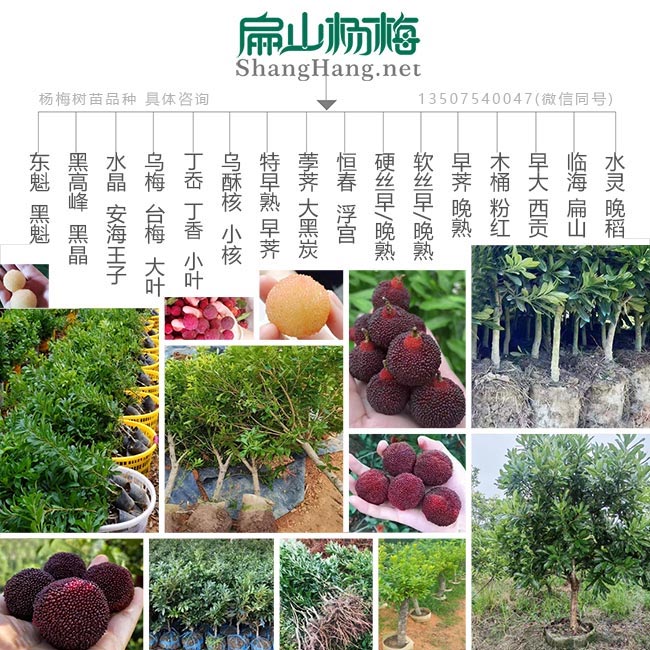陝西西安嫁接1年(nián)水晶(jīng)、銅川東魁、楊梅球、寶雞綠化苗木、2023-JXLY21采摘(zhāi)楊梅果實、高壓台梅、鹹陽(yáng)烏梅、江蘇(sū)永樹冠楊梅小杯苗、延安手機電話13507五40047烏酥楊梅大樹地(dì)徑10-20-30公分左右,土球大小2米左右、渭南高分枝美觀造型(xíng)楊梅大樹、商洛各品種規格(gé)、漢中大杯(bēi)苗、中杯苗、安康小杯苗培育、榆林大型規模化專業批發各地徑、高度、大(dà)小、包裝方式的楊梅樹苗全國送貨上門!另有楊梅回收(shōu)、加工、茶油收購,支(zhī)持(chí)出口,我們的茶油很多都(dōu)銷到(dào)台灣地區。楊梅樹苗發貨主要省份有:廣西、陝西、江蘇、浙江、雲南、貴州、湖南、福建、江西、湖北、江蘇歡迎合作。
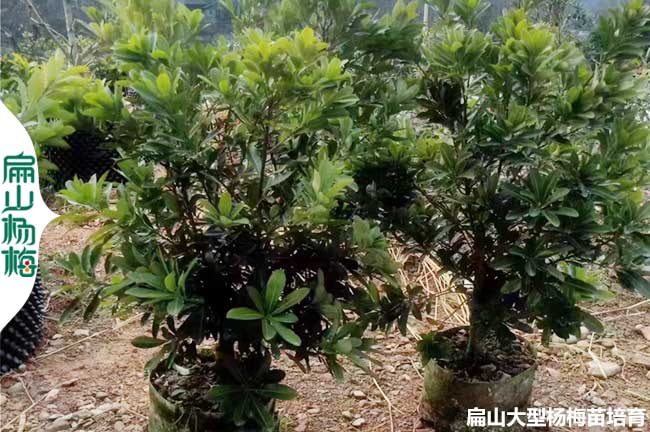
體驗(yàn)種植的樂趣同時收獲、 東魁楊梅、果大肉(ròu)厚、飽滿多汁、酸甜可口、豐產穩產、黑(hēi)炭(tàn)楊梅 果大核小、顆顆飽滿 甜度高、豐產(chǎn)穩產耐(nài)寒氣候區、 HARDINESS ZONE 本圖根據國際(jì)通用標準劃分出中國各(gè)地的較低氣溫區、大黑炭 榆林黑晶楊梅小營養杯苗批發、得出中國耐寒(hán)氣候區位圖,根據植物產品對應的耐寒氣候(hòu)區可以對應找到植(zhí)物的適(shì)種區域,對於(yú)新手入門或新引進植物(wù)品種的(de)種(zhǒng)植更有科學依據。種植者也可根據當地的耐寒氣候區(qū)選擇適合的(de)植物品種。
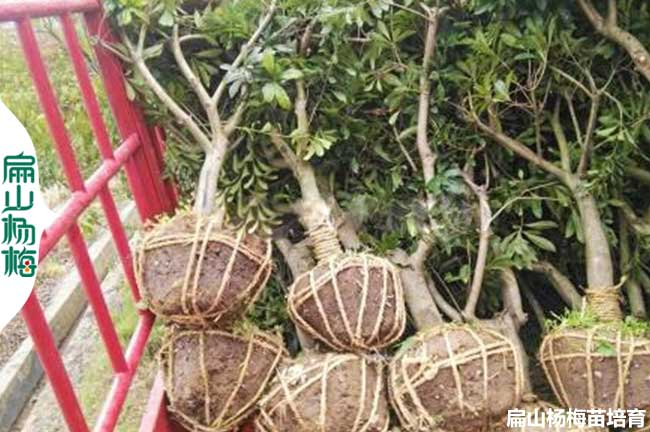
地理標(biāo)誌地域保護範圍包括靖 州苗族侗族自治縣(以下簡(jiǎn)稱(chēng) “靖州”)坳上、甘棠、文溪等 11個鄉鎮的52個村。截至2024年 12月,靖州培育的楊梅品種達56 個,楊梅(méi)種(zhǒng)植麵積達6666.67公 頃,年產鮮果6.9萬噸。人文曆史靖州楊梅(méi)是靖(jìng)州 “三寶” (楊梅、茯(fú)苳、山核桃) 之一(yī),當地栽培曆史(shǐ)悠久,(中(zhōng)源楊梅苗)南方沿海地區種植的(de)楊梅樹苗品種高50公分-扁山楊梅其(qí)中 以靖州“楊梅小鎮”坳上鎮的木 洞楊梅尤為突出。園地選擇楊梅喜溫(wēn)暖的亞熱帶果樹,宜選(xuǎn)擇年平均氣溫在15~22°C、絕對(duì)較低溫度高於-9°C、花期較低溫度大於0°C的氣候條(tiáo)件(jiàn)。高溫對楊(yáng)梅的生長不宜,烈日照(zhào)射易引起枝(zhī)幹曬焦枯死,特別是5—6月的果實迅速發育期忌30~35°C高(gāo)溫。栽(zāi)培(péi)在朝南的山頂處時(shí),生長不旺,結果較少,品質(zhì)較差。
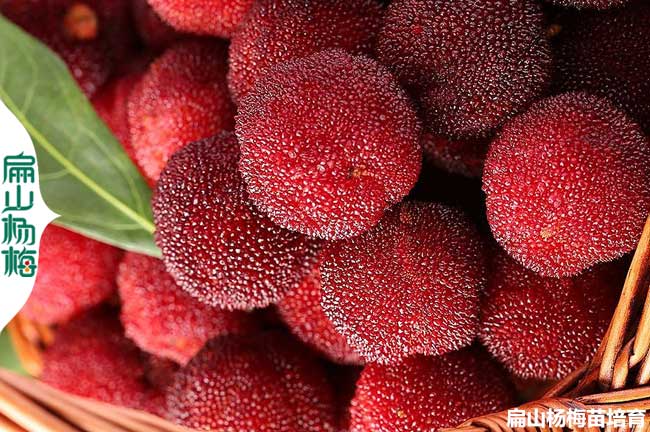

2011年(nián)8月經農業 部評審,靖州楊梅獲得國家農產 品地理標誌登記保護;2013年10 月,靖州楊(yáng)梅獲得國家工商行政 管理總局商標局注冊的地理標(biāo)誌 證明商標;2024年10月(yuè),靖州楊 梅獲湖南省首批(pī)“一縣一特”農產品優秀品牌稱號。近年來,靖 州著力打造“加工園區+種養基 地+科研中心+現代物流+文化旅 遊” “五位一體(tǐ)”的(de)現代農業發 展模式,建起楊梅(méi)生態產業園,儲藏(cáng)、遠距離 運輸和加工果采收期為果麵全著 色,但未達品種的固有色。采果 應選擇晴天的早晚或陰天進行(háng), 采摘時應輕采輕放,並選用通氣 的(de)小塑料筐或小竹籃盛放,並(bìng)在(zài) 果籃底部及四周墊襯(chèn)新鮮幹淨的 狼蕨(jué)葉或楊梅葉。
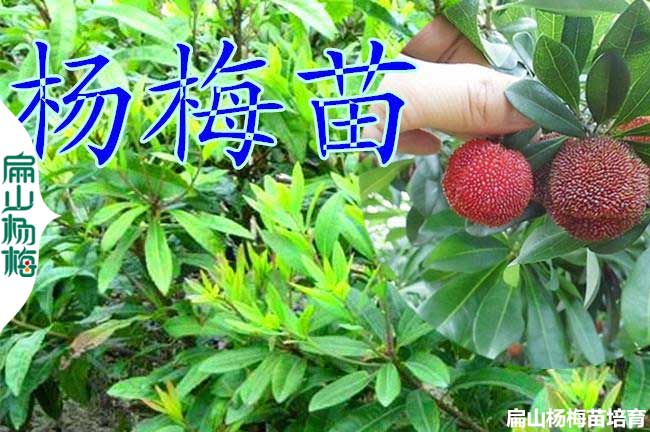
Grafting for 1 year: Crystal, Dongkui, Yangmei Ball, Green Seedlings, 2023-JXLY21 Harvesting Yangmei Fruit, Yongguan Yangmei Small Cup Seedlings, High Voltage Taiwan Plum, Wumei, Wusu Yangmei Big Trees with a ground diameter of about 10-20-30 cm, mobiles phones number 13507五40047, soil ball size of about 2 meters, high branching and beautiful Yangmei Big Trees, various varieties and specifications, large cup seedlings, medium cup seedlings, small cup seedlings cultivation, large-scale professional wholesale of various diameters, heights, sizes The packaging method of Yangmei seedlings is delivered to your doorstep nationwide! We also have Yangmei recycling, processing, and tea oil acquisition to support exports. Many of our tea oil is sold to Taiwan. The main provinces for the shipment of Yangmei seedlings include Guangxi, Zhejiang, Yunnan, Guizhou, Hunan, Fujian, Jiangxi, Hubei, and Jiangsu. Cooperation is welcome.
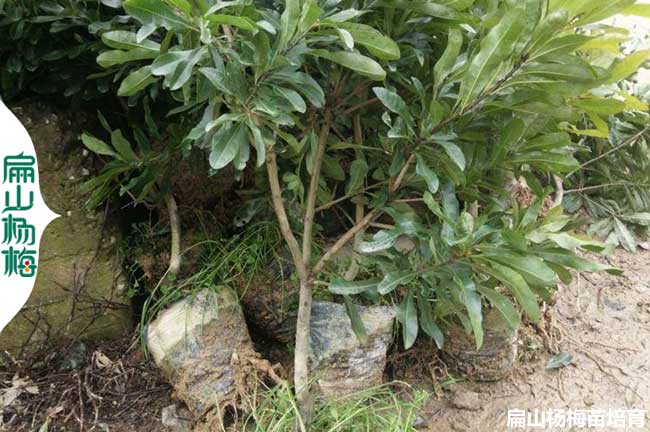
Experience the fun of planting while harvesting, Dongkui Yangmei, with large and juicy fruit, delicious sour and sweet taste, high and stable yield, black charcoal Yangmei with large kernels and small kernels, high plump sweetness, and high and stable cold climate zones. This map divides the lowest temperature zones in various regions of China according to international standards, and obtains a map of China's cold climate zones, According to the cold resistant climate zone corresponding to the plant product, suitable planting areas for plants can be found, which provides more scientific basis for the planting of new or introduced plant varieties. Growers can also choose suitable plant varieties based on the local cold climate zone.
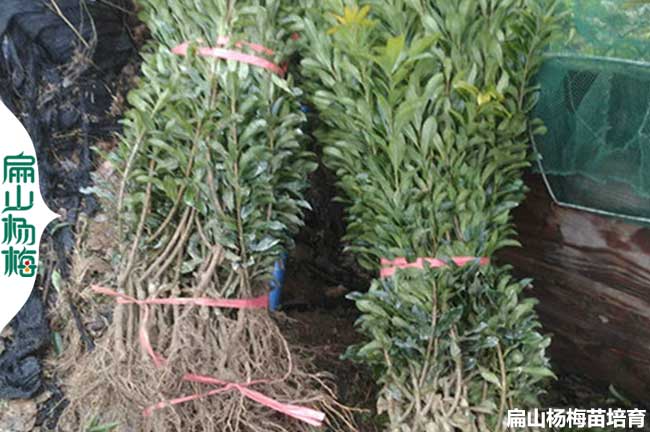
The scope of geographical indication protection includes 52 villages in 11 townships, including Aoshang, Gantang, and Wenxi, in Jingzhou Miao and Dong Autonomous County (hereinafter referred to as "Jingzhou"). As of December 2024, there are 56 varieties of Yangmei cultivated in Jingzhou, with a planting area of 6666.67 hectares and an annual output of 69000 tons of fresh fruits. Jingzhou Yangmei is one of the "Three Treasures" of Jingzhou in terms of cultural history, including Yangmei, Fuliang, and hickory. The local cultivation has a long history, among which the Mudong Yangmei in Aoshang Town, the "Yangmei Town" of Jingzhou, is particularly prominent. The garden should be planted with warm subtropical fruit trees, with an average annual temperature of 15-22 ° C, an absolute minimum temperature higher than -9 ° C, and a minimum temperature greater than 0 ° C during flowering. High temperature is not suitable for the growth of Yangmei, as exposure to scorching sun can easily cause the branches to wither and die, especially during the rapid fruit development period from May to June. High temperatures of 30-35 ° C should be avoided. When cultivated at the mountaintop facing south, it does not grow vigorously, yields fewer fruits, and has poor quality.
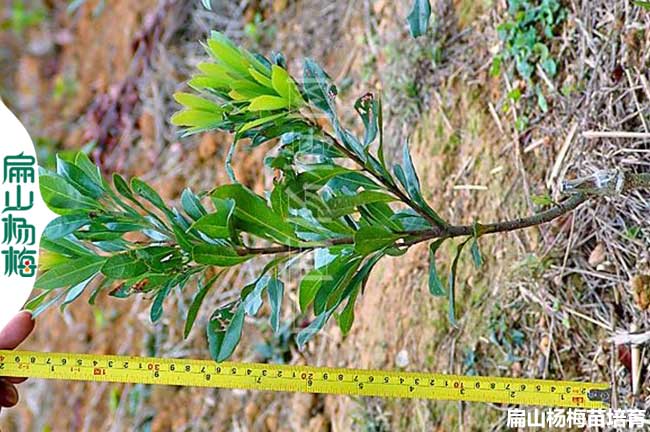
After planting, water appropriately and do not fertilize! If the dosage is not appropriate, it is easy to pickle the seedlings and wait for the fruit seedlings to root and sprout before considering appropriate fertilization. Shopping instructions: worry free after-sales service·If you are purchasing for the first time, please read it carefully. Variety introduction: Xinjiang Tibet is below -45.5C-45.5 ° C~-40.0C-40.0 ° C~-34.5 ° C-34.4C-28.9 ° 28.8C-23.4C-23.3 ° C~-17.8 ° C-17.7 ° C~-12.3 ° C-12.2 ° C~-6.7 ° C Gansu Qinghai Beijing Tianjin Hebei Shanxi 7 Shandong Sichuan Chongqing Shaanxi Henan Jiangsu 8 Shanghai Hubei Zhejiang Jiangxi Nangui Zhou D Hunan Le Fujian Hainan Port Gate 6.6 ° C~-1.2'C10-11C~4.4C4.5 ° C.
In August 2011, after evalsuation by the Ministry of Agriculture, Jingzhou Yangmei was granted the protection of national agricultural product geographical indication registration; In October 2013, Jingzhou Yangmei obtained the geographical indication certification trademark registered by the Trademark Office of the State Administration for Industry and Commerce; In October 2024, Jingzhou Yangmei was awarded the title of "One County, One Special" Excellent Agricultural Product Brand in Hunan Province. In recent years, Jingzhou has focused on building a modern agricultural development model that integrates "processing parks, breeding bases, scientific research centers, modern logistics, and cultural tourism". It has established a Yangmei Ecological Industrial Park, with storage, long-distance transportation, and processing. The fruit harvest period is full color, but it has not yet reached the fixed color of the variety. Fruit picking should be carried out in the morning or evening on sunny or cloudy days. When picking, it should be done lightly and placed in ventilated small plastic baskets or bamboo baskets. Fresh and clean wolf fern or bayberry leaves should be placed at the bottom and around the basket.
